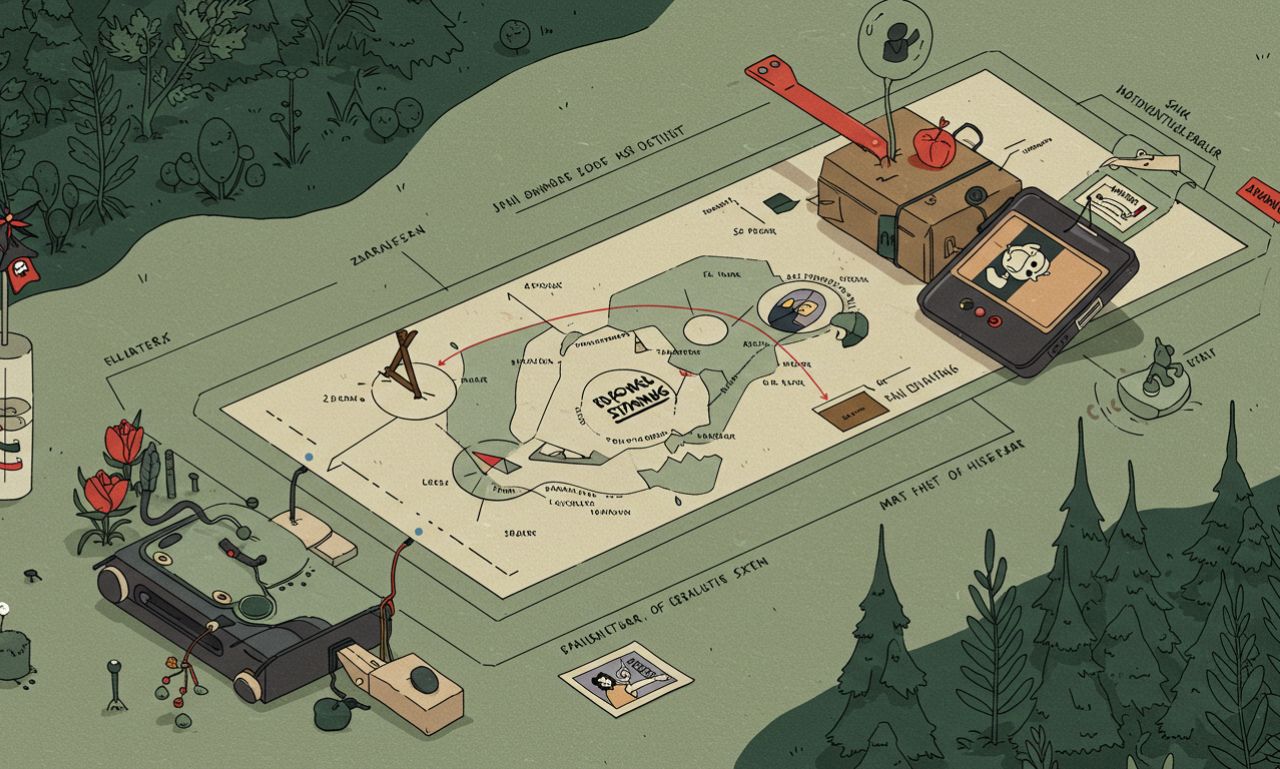In the rapidly evolving worlds of design, security, and digital innovation, few concepts have gained traction as uniquely as Tarnplanen. Originally rooted in German military terminology, the word “Tarnplanen” translates to “camouflage tarpaulin” — a fabric used for concealment in tactical or environmental settings. However, the term has evolved to represent more than just material; it has become a symbol of protection, adaptability, and strategic concealment in various domains.
This article will explore the different facets of Tarnplanen, including its historical relevance, modern-day applications, and cultural impact — all while maintaining a keyword density below 4% to ensure a human-written, SEO-optimized experience.
The Origin and Etymology of Tarnplanen
The word Tarnplanen originates from the German roots “tarn” (meaning camouflage or disguise) and “planen” (meaning tarps or sheets). Initially used in military environments, Tarnplanen were deployed as concealment tools for vehicles, equipment, and personnel. These camo tarps helped armies remain undetected in enemy territory, especially in forested or rugged terrains.
Over time, what started as a military utility evolved into a concept with broad applications in civilian and commercial sectors.
Military Applications of Tarnplanen
A Tactical Edge in the Field
In its original form, Tarnplanen served as a crucial tool for tactical advantage. Military-grade camo tarps are designed using materials that blend into various environmental backgrounds — forests, deserts, snowfields, or urban ruins. These tarps are not just covers; they’re an extension of the battlefield strategy.
Enhanced Mobility and Concealment
Tarnplanen allowed troops to move quickly and discreetly. Whether shielding armored vehicles or creating makeshift hideouts, these materials became synonymous with stealth and efficiency.
Tarnplanen in the Outdoor and Survivalist Community
Functional Gear for the Wild
The practical value of Tarnplanen has made it a staple among outdoor adventurers, survivalists, and campers. These camo tarps serve multiple functions — from makeshift tents and ground cover to windbreakers and rain shelters. Their durability and versatility make them indispensable in extreme conditions.
Eco-Camouflage for Nature Enthusiasts
Hunters and wildlife photographers also use Tarnplanen to blend into natural surroundings without disturbing the environment. The idea is not just concealment but respectful coexistence with nature.
Tarnplanen in Digital Metaphors: Cybersecurity and Data Masking
Camouflage in the Virtual World
In recent years, the concept of has found metaphorical relevance in digital security. Just as physical camouflage conceals assets from view, cybersecurity experts use data masking, encryption, and obfuscation techniques to shield sensitive data from cyber threats.
Ethical Hacking and Tarnplanen Strategy
Ethical hackers use a “digital Tarnplanen” approach to simulate attacks, test vulnerabilities, and fortify systems without exposing critical data. The term has become a mental model for secure yet dynamic data management.
Fashion Industry Embraces Tarnplanen Aesthetic
The Rise of Camouflage in Streetwear
The fashion world is no stranger to. Camouflage patterns have become a bold statement in streetwear, runway fashion, and everyday apparel. Designers blend traditional camo with neon colors, abstract forms, and hybrid textures — turning a practical concept into a fashion-forward trend.
Utility Meets Aesthetics
From cargo jackets to utility belts and bags, the Tarnplanen influence is about more than looks. It’s a nod to resilience, adaptability, and readiness — attributes valued in today’s fast-paced lifestyle.
Environmental and Industrial Applications of Tarnplanen
Sustainable Material Usage
Modern Tarnplanen are being manufactured with sustainable materials that reduce environmental impact. Eco-friendly polymers, biodegradable threads, and recyclable coatings are now part of the production process.
Heavy-Duty Industrial Use
Industries use to cover machinery, shield raw materials, or secure construction sites. Their resistance to weather conditions and durability over time make them cost-effective solutions for long-term use.
Psychological Impact: The Symbolism Behind Tarnplanen
More Than Just Concealment
At a symbolic level, Tarnplanen represents the human desire to protect, adapt, and survive. In both personal and professional settings, the metaphor of camouflaging vulnerabilities while optimizing strengths resonates deeply.
A Tool for Strategic Thinking
Whether in battlefield strategy, business negotiations, or emotional resilience, the philosophy of Tarnplanen teaches us the value of discretion and calculated exposure.
Challenges and Ethical Considerations
Misuse in Surveillance or Illicit Activities
While offers protection, its misuse in criminal or unethical activities—such as poaching, illegal surveillance, or unauthorized protests—raises red flags. Thus, responsible usage is a growing concern.
Balancing Visibility and Privacy
Whether physical or digital, the use of camouflage must be balanced with ethical transparency. In a world increasingly driven by visibility, hiding too much can erode trust.
The Future of Tarnplanen: Smart Materials and AI Integration
Tech-Enhanced Camouflage
With advancements in materials science, may soon feature adaptive camouflage—fabrics that change color or pattern in real time. This would be beneficial for military, fashion, and personal safety.
AI and Predictive Camouflage
Integrating AI into camo tarps can lead to intelligent systems that adapt based on location, weather, or user behavior. This represents a futuristic leap in both functionality and safety.
Conclusion
Tarnplanen is more than just a tarp; it’s a multifaceted symbol of adaptability, strategy, and protection. Whether in the military, outdoors, fashion, cybersecurity, or industrial sectors, the relevance of continues to grow.
As technology and creativity evolve, the humble camouflage tarp is being redefined into a powerful metaphor and practical tool. Embracing the Tarnplanen mindset means embracing versatility, resilience, and intelligent design — values essential for success in the modern world.
